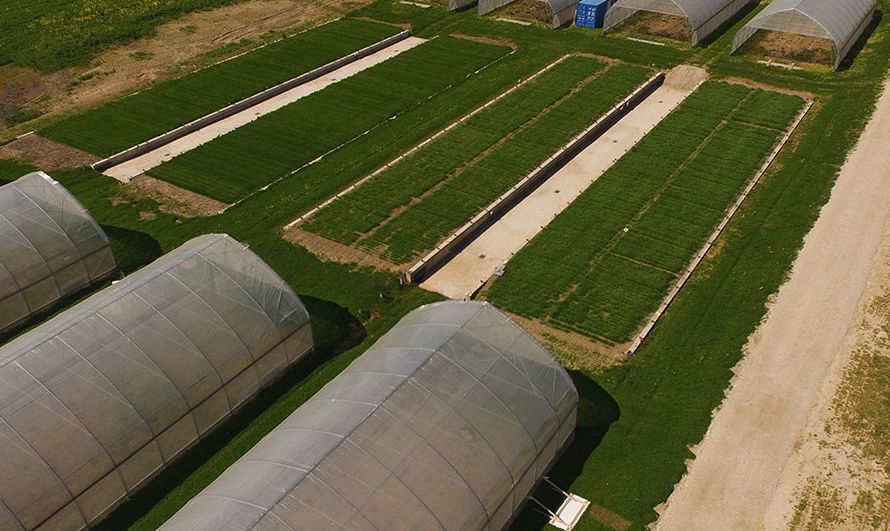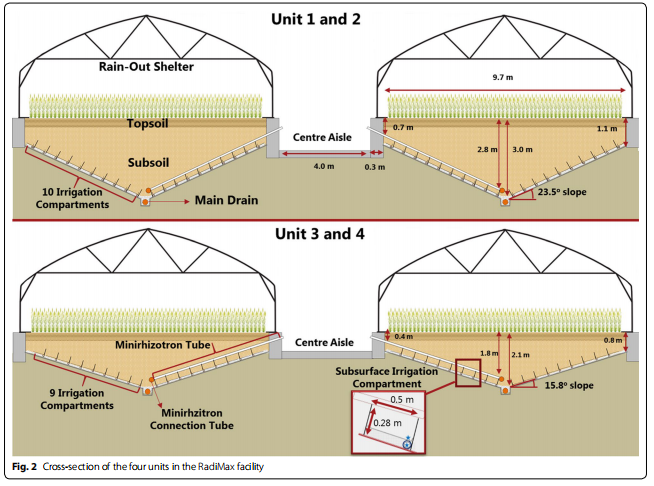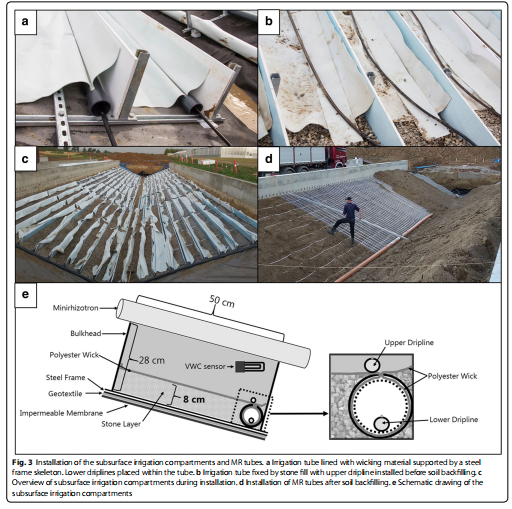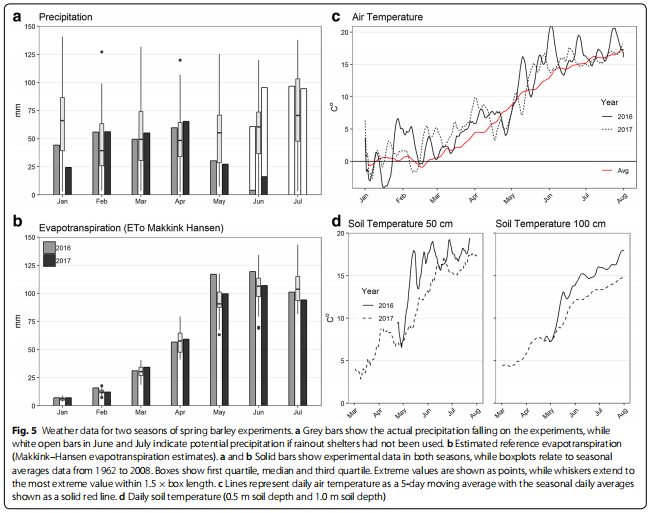利用Videometer多光譜成像系統構建的Radimax系統用于植物深根研究
前言:Videometer公司是多光譜成像系統生產商,開發了系列多光譜成像設備如VideometerLab 4多光譜成像系統、VideometrMR根系多光譜成像系統、VideometerLiq固、液兩用多光譜成像系統并與丹麥歌本哈根大學聯合開發了Radimax深根研究用多光譜成像系統,目前利用Videometer系統發表的文章已經超過了250篇,是當前表型研究領域發表文章多、應用廣泛的多光譜成像系統。
摘要
背景: 根是植物的關鍵器官,要實現產量穩定,有效利用來自土壤資源至關重要。但作物基因型之間的根性狀表型變異多數還未知,田間根系發育篩查昂貴且耗力。因此,函待開發在田間進行全生長植物根系性狀、特別是位于土壤深層的根系研究的新方法。
結果: 研究人員開發了一種新型表型設施(RadiMax)用于在半田間條件下研究根系生長以及土壤資源獲取。設施包括4個單元,每個單元面積為400m2,分別安裝有150根微根管,允許對0.4 m–1.8 m或 0.7 m–2.8 m土壤深度間隔的根進行觀察。根系觀測通過多光譜微根光成像系統實現。植物生長行與水分梯度垂直,設施安裝有多深度亞灌溉系統以及移動雨棚。水梯度可實現將根觀測與冠層脅迫反應進展相關聯。
結論:要驗證以上技術概念,選擇了栽培種春大麥 (Hordeum vulgare L.) ,種植在該系統中進行為期兩季的研究。利用該系統可觀測到不同深根生長基因型差異,在水梯度下,可觀測到地上部的生理反應。盡管進一步技術開發和技術驗證還在進行中,半田間設施不失為一種在土壤深層鑒別土壤資源有效利用的根基因差異的新方法。
關鍵詞: 干旱,微根管,氮元素,表型,根,半田間土壤,水
補充:北京博普特科技有限公司是丹麥Videometer公司中國區總代理,全面負責其系列多光譜成像設備在中國市場的推廣、銷售和售后服務。





Construction of a large-scale semi-feld facility to study genotypic diferences in deep root growth and resources acquisition
Simon Fiil Svane1*,Christian Sig Jensen2 and Kristian ThorupKristensen1
Abstract
Background: Roots are vital organs for plants, and the efective use of resources from the soil is important for yield stability. However, phenotypic variation in root traits among crop genotypes is mostly unknown and feld screening of root development is costly and labour demanding. As a consequence, new methods are needed to investigate root traits of fully grown crops under feld conditions, particularly roots in the deeper soil horizons.
Results: We developed a new phenotyping facility (RadiMax) for the study of root growth and soil resource acquisi tion under semi-feld conditions. The facility consists of 4 units each covering 400 m2 and containing 150 minirhizo trons, allowing root observation in the 0.4 m–1.8 m or 0.7 m–2.8 m soil depth interval. Roots are observed through minirhizotrons using a multispectral imaging system. Plants are grown in rows perpendicular to a water stress gradi ent created by a multi-depth sub-irrigation system and movable rainout shelters. The water stress gradient allows for a direct link between root observations and the development of stress response in the canopy.
Conclusion: To test the concept and technical features, selected spring barley (Hordeum vulgare L.) c*rs were grown in the system for two seasons. The system enabled genotypic diferences for deep root growth to be observed, and clear aboveground physiological response was also visible along the water stress gradient. Although further technical development and feld validation are ongoing, the semi-feld facility concept ofers novel possibilities for characterising genotypic diferences in the efective use of soil resources in deeper soil layers. Keywords: Drought, Minirhizotron, Nitrogen, Phenotyping, Root, Semi-feld, Soil, Water